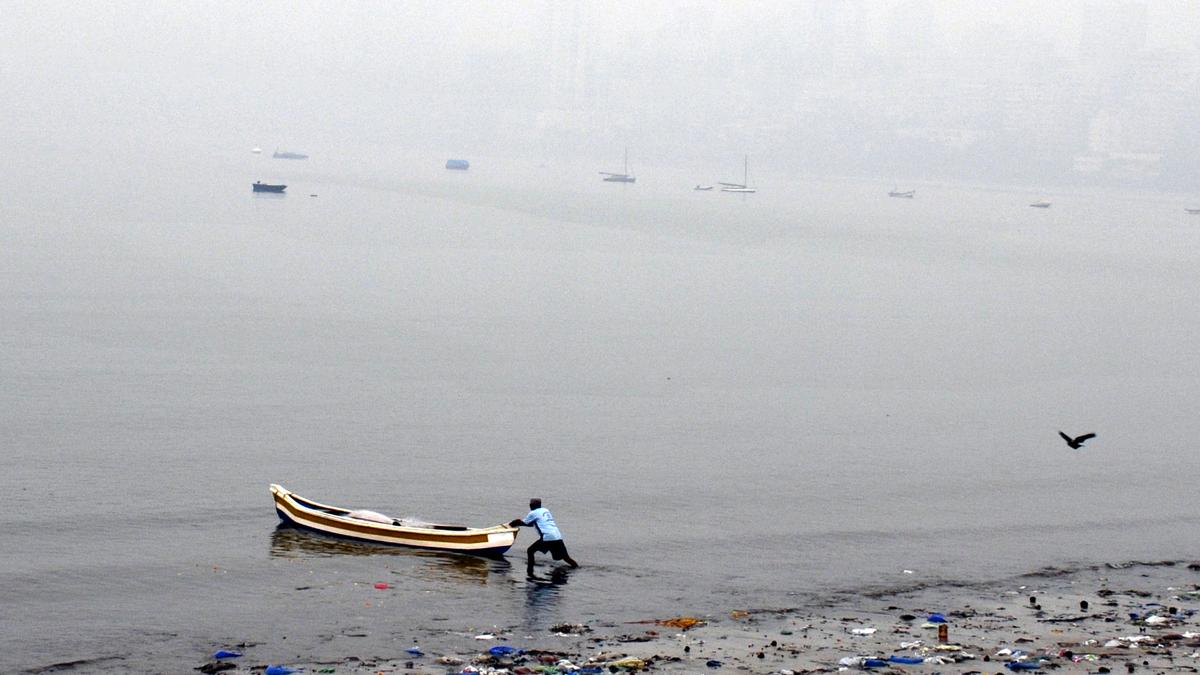
Maharashtra Pollution Control Board does not accept that water bodies are dying, says fishing community
The Hindu
Industrial pollution in Navi Mumbai's water bodies causing marine life deaths, sparking legal battles and environmental concerns.
Following the February 2 report in The Hindu on ‘Industrial pollution kills marine life in Navi Mumbai, traditional fishermen to move High Court’, the Maharashtra Pollution Control Board (MPCB) on February 6, conducted a field visit to Diwale creek in Navi Mumbai to assess the condition of the water body. During the visit, officials also collected water samples to test in a laboratory.
On March 4, results of the MPCB lab test on water samples collected from the creek showed suspended solids at 62 mg/l (milligrams per litre), biochemical oxygen demand (BOD) at 20 mg/l, chloride at 11796.34 mg/l, chemical oxygen demand (COD) at 236 mg/l, dissolved oxygen at 6 mg/l, and oil and grease were found below the detectable limit. The report also showed total alkalinity at 258 mg/l, nitrate nitrogen at 4.79 mg/l, and total phosphate at 1.58 mg/l.
Following the MPCB’s report, the members of Maharashtra Small Scale Traditional Fish Workers Union through Atlas Lab on March 24, 2025, conducted another lab test, in Diwale and Nhava Shewa creek, the report of which appeared on March 29, 2025. The test reports revealed that the appearance of the water samples was grey in colour with suspended particles (solid materials that do not dissolve in water).
The total dissolved solids were found 20998 mg/l whereas, the requirement is maximum 2100 mg/l. The COD was found to be 6361 mg/l whereas the maximum requirement is 250 mg/l. BOD was reported 2140 mg/l whereas the maximum requirement is just 20 mg/l. Fecal coliform (a sign of fecal contamination and a possible risk of waterborne illnesses) found was 2675 MPN (most probably number) per 100 ml whereas it should not exceed 1000.
MPCB officials did not respond to the differences in the report.
Vicky Patil, water pollution expert from Vanashakti, Mumbai-based non-profit that works for restoring natural habitats and protecting biological diversity across Maharashtra, said, “There is a drastic difference in both the reports. COD level in MPCB’s report is 236 mg/l which is below the permissible limit for effluent discharge in water body but when the effluent is discharged in any water body, it gets diluted, and it should not be 236 mg/l, instead it should be less than 100 mg/l. But in this case the water body has a COD of 236 mg/l suggesting that it is already highly polluted. Further the report by the independent lab suggests the pollution levels are way beyond permissible limits. COD 6361 mg/l, indicates a heavy source of pollution like effluent discharge by industries.”
The first water samples collected by the independent lab testing company Atlas Lab on January 8, 2025, revealed in its January 15, 2025, report that the appearance of the water was grey in colour; total suspended solids found was 83 mg/l whereas the normal requirement is maximum 50. Total dissolved solids observed were 17123 mg/l whereas the normal requirement is maximum 2,100. The chemical oxygen demand found was 3,470 mg/l whereas, requirement was maximum 250. The biochemical oxygen demand is found to be 1154 mg/l whereas the normal requirement cannot exceed maximum 20. Fecal coliform is recorded at 2680 mg/l whereas the maximum requirement is 1000 mg/l.





















 Run 3 Space | Play Space Running Game
Run 3 Space | Play Space Running Game Traffic Jam 3D | Online Racing Game
Traffic Jam 3D | Online Racing Game Duck Hunt | Play Old Classic Game
Duck Hunt | Play Old Classic Game











